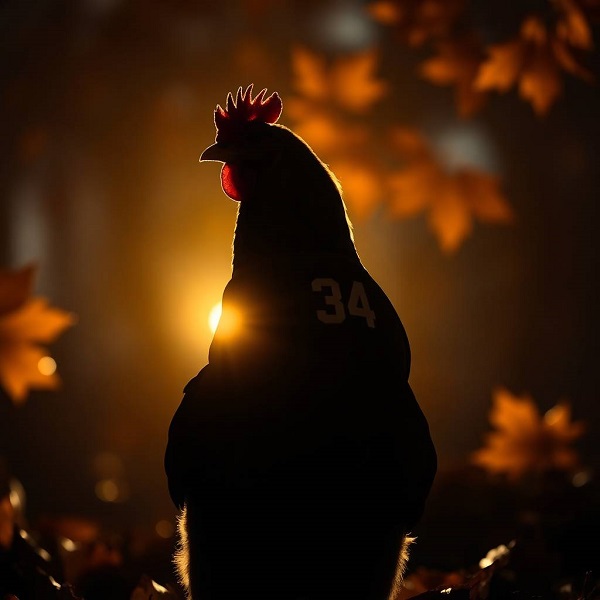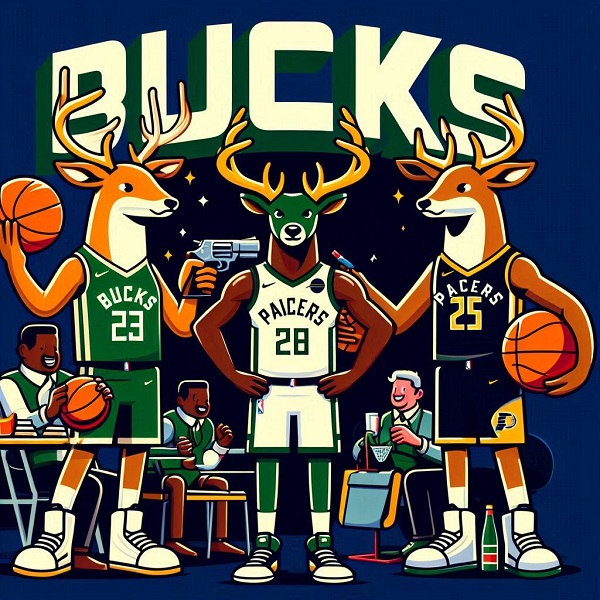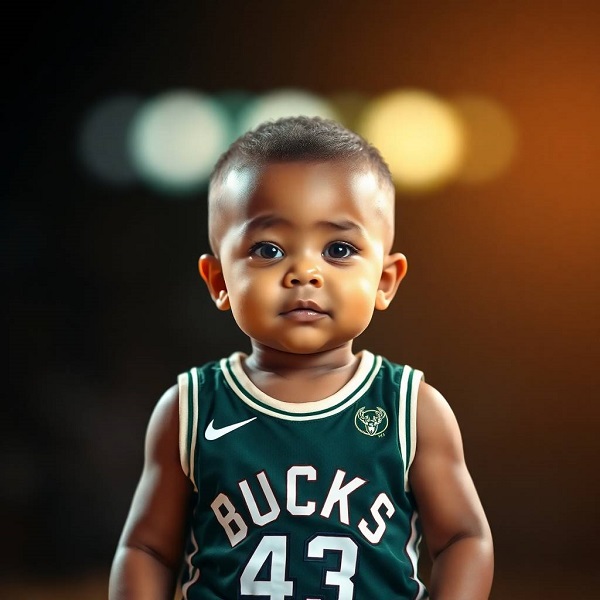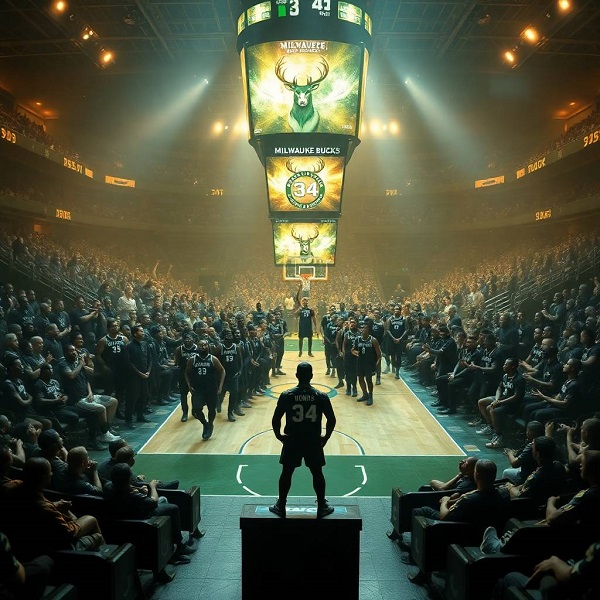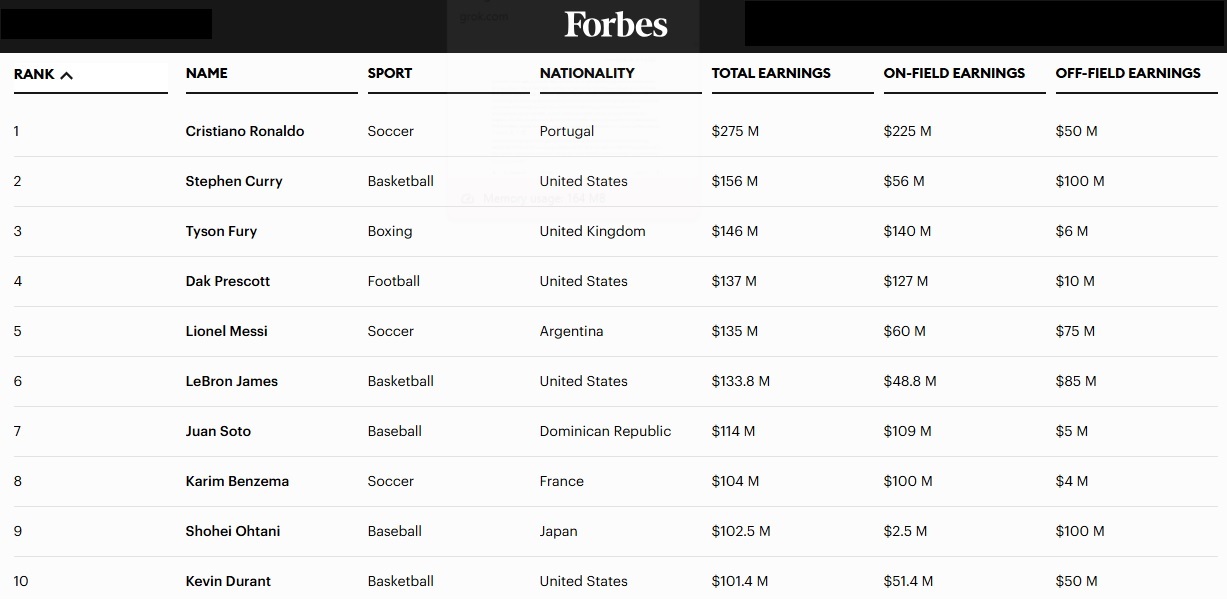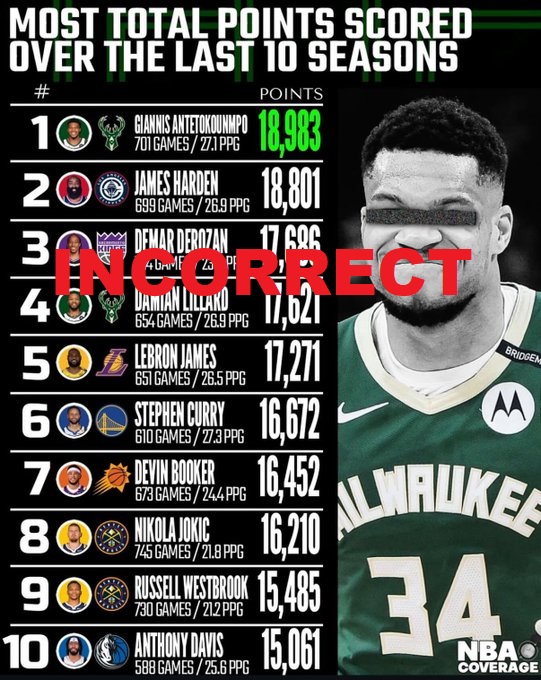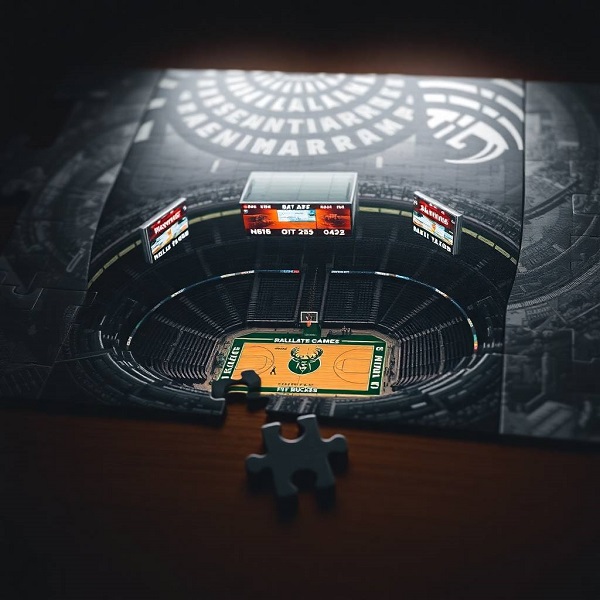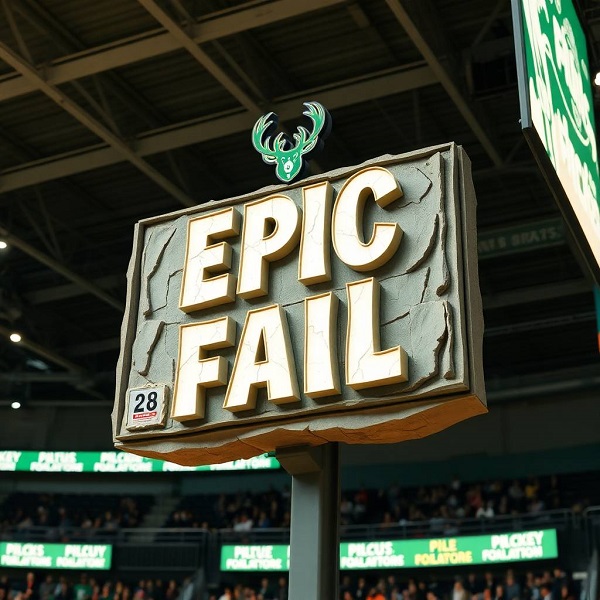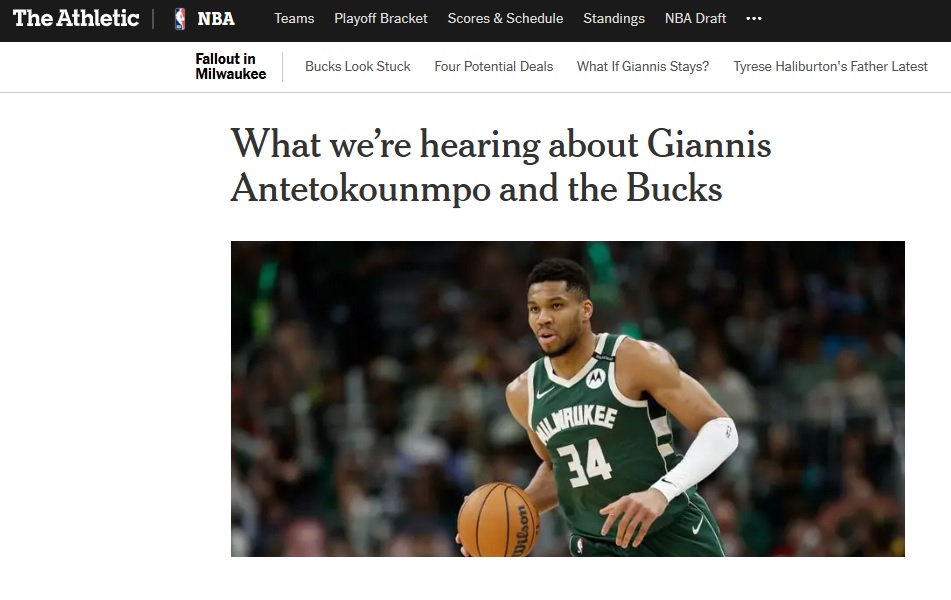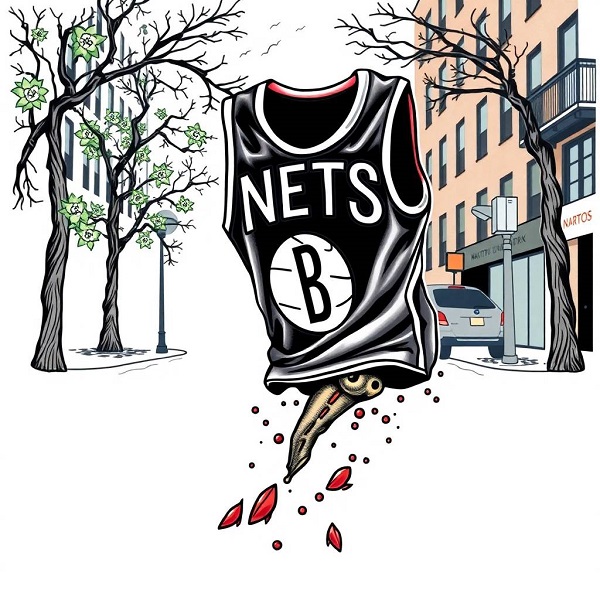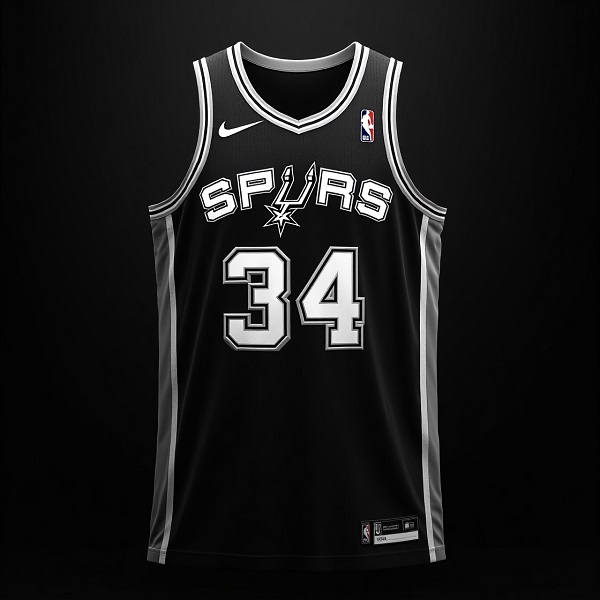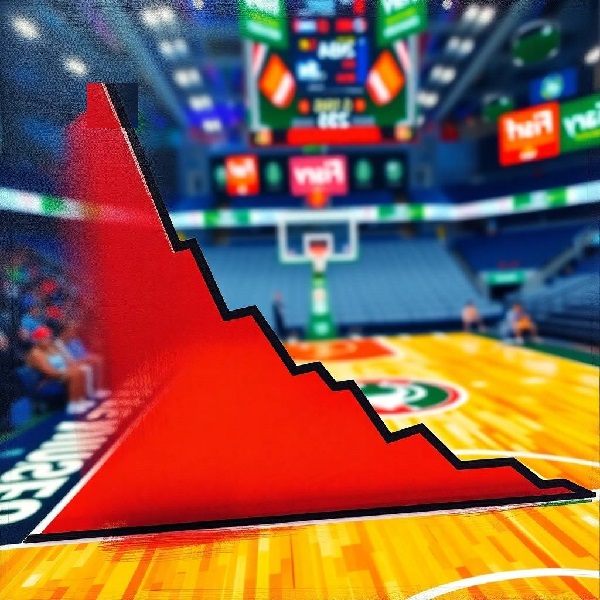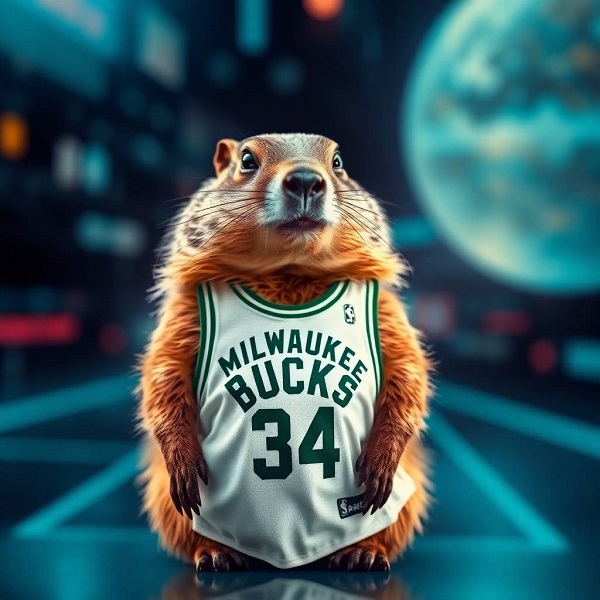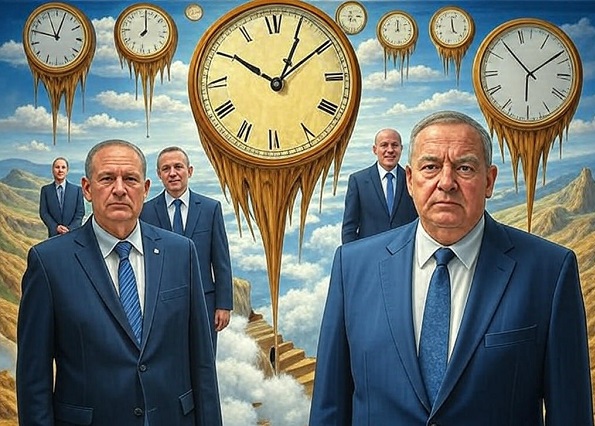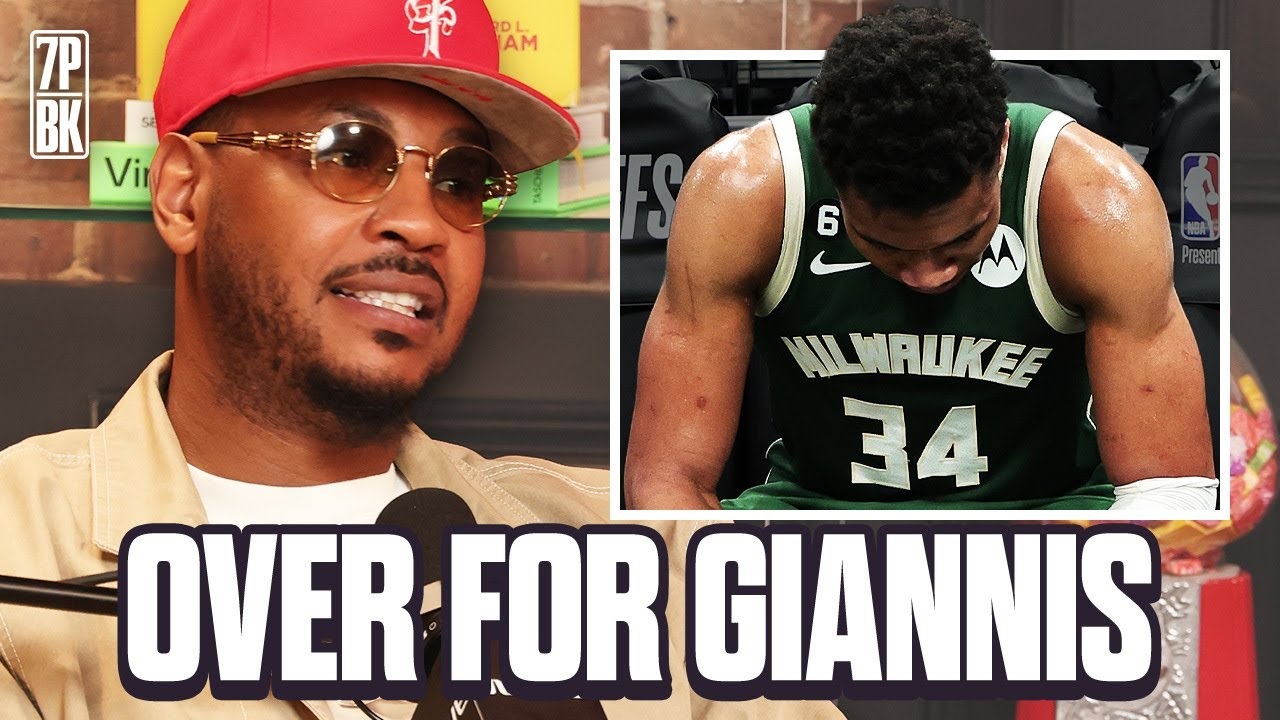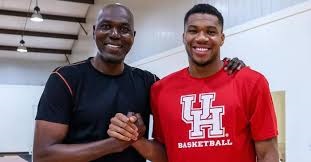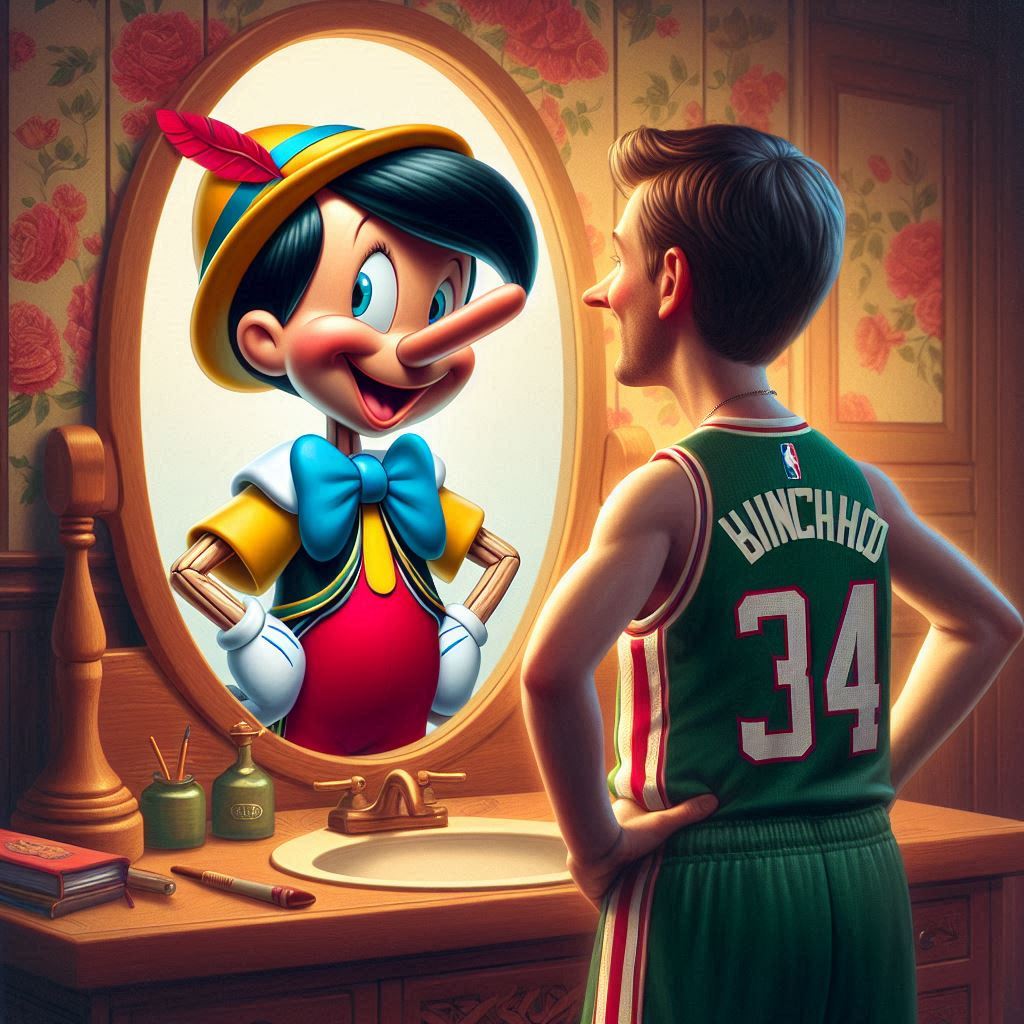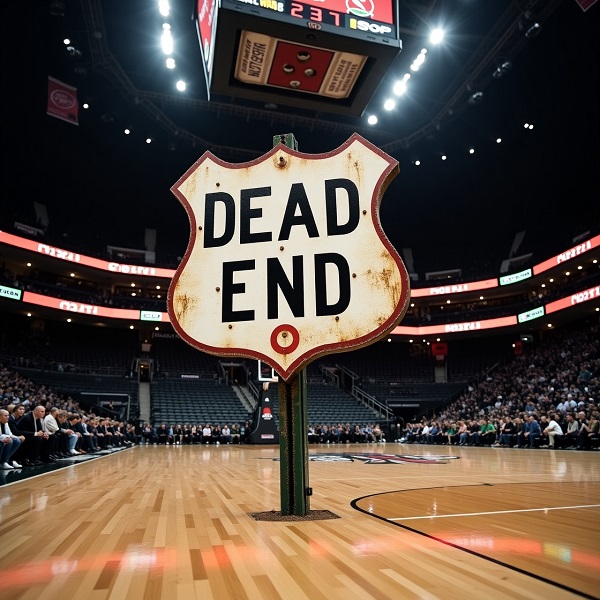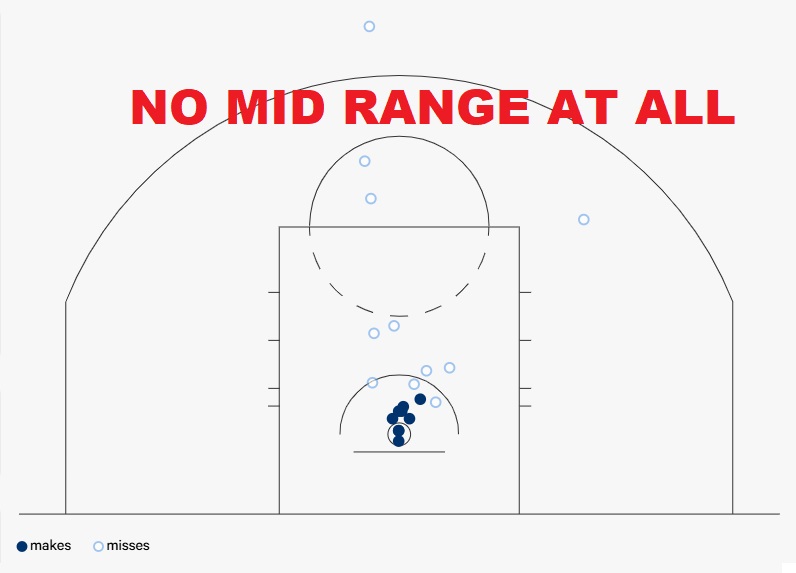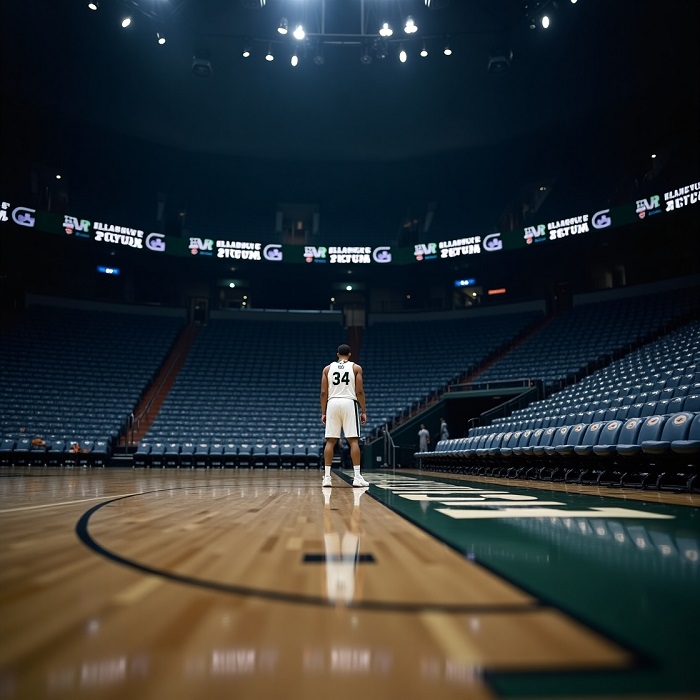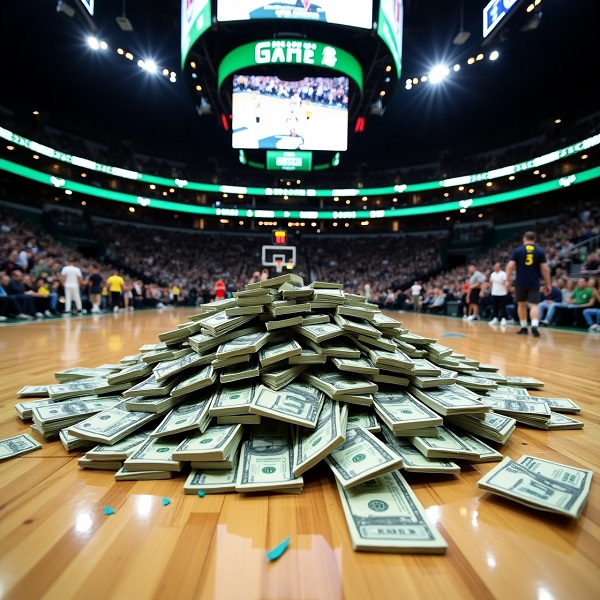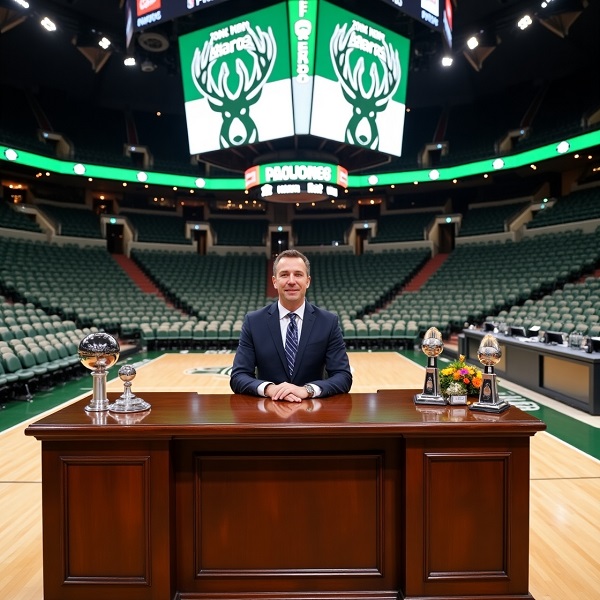You would expect the NY times not to fall into the click bait trap. Granted, this article is high level click bait. It also contains most of the relevant information. Published on May 13, 2025, titled “What we’re hearing about Giannis Antetokounmpo and the Bucks,” speculates heavily on the possibility of the Milwaukee Bucks trading their superstar. While the piece captures the current buzz around Antetokounmpo’s future, it falls short in several critical areas. Specifically, it overlooks the practical constraints that make most of the proposed trade scenarios unrealistic, ignores Antetokounmpo’s proven playoff limitations, and fails to acknowledge that his prime may be waning as the NBA adapts to his playing style.
1. Ignoring Practical Trade Constraints
The article suggests several trade destinations for Antetokounmpo, including the Houston Rockets, San Antonio Spurs, New York Knicks, Brooklyn Nets, Dallas Mavericks, and Golden State Warriors. However, it glosses over logistical and financial hurdles that render these proposals unrealistic under the NBA’s Collective Bargaining Agreement (CBA) and the Bucks’ roster situation.
Salary Cap and Second Apron Issues
Antetokounmpo’s 2025-26 contract carries a $54.1 million cap hit, potentially higher for apron calculations. The Bucks are $6.5 million above the second apron, a restrictive threshold that prohibits taking back more salary than sent out, aggregating contracts, or using cash in trades. Trading Antetokounmpo would require sending out significant salary—likely players like Bobby Portis ($12.6 million) or Brook Lopez ($23 million)—to match incoming salaries, a complexity the article ignores.
For example, Houston’s proposed package of Amen Thompson, Jalen Green, and picks would need additional salary fillers like Keldon Johnson ($19 million) or Harrison Barnes ($18 million), burdening Milwaukee with long-term contracts misaligned with rebuilding goals. Similarly, a Spurs deal with Stephon Castle and picks would require veterans like Johnson or Barnes, further complicating the Bucks’ cap situation. The article’s suggestion of a Dallas trade involving the No. 1 pick (Cooper Flagg) is impractical, as Flagg’s $13.8 million rookie salary would necessitate multiple mid-sized contracts, disrupting Dallas’ win-now core around Kyrie Irving and Anthony Davis.
Milwaukee’s Depleted Draft Assets
The Bucks’ draft capital is severely limited, with unprotected first-round picks owed in 2025, 2027, and 2029, and swap rights held by New Orleans (2026) and Portland (2028, 2030). This restricts their ability to sweeten trade offers or offload contracts like Pat Connaughton’s $9.4 million player option, which the article overlooks. Trading Connaughton alone could cost three to four second-round picks or a late first-rounder, assets Milwaukee lacks. Teams like the Knicks or Nets might demand the Bucks absorb undesirable contracts (e.g., Ben Simmons’ $40.3 million expiring deal), further complicating deals.
Misaligned Trade Packages
The article assumes Milwaukee could secure a “meaningful, competitive” rebuild package, citing teams like Houston or San Antonio. However, it overestimates Antetokounmpo’s trade value given his recent playoff struggles and age (30). Teams may hesitate to gut rosters for a player with two years left on his deal (plus a 2027-28 player option) who hasn’t advanced past the first round since 2021. Proposed packages like Zion Williamson from New Orleans or Paul George from Philadelphia are impractical. Williamson’s injury history (214 games in six seasons) and $44.4 million salary are risky, while George’s $52.2 million contract and age (35) offer no long-term value for a rebuilding team. These suggestions ignore Milwaukee’s need for young, cost-controlled talent and draft picks.
2. Overlooking Antetokounmpo’s Playoff Limitations
The article portrays Antetokounmpo as a transcendent star whose “greatness could compel nearly every owner and GM” to adjust plans. While his 2024-25 regular-season stats—30.4 points, 11.9 rebounds, 6.5 assists on 60.1% shooting—are elite, it ignores his recurring playoff struggles, which reduce his trade value and complicate Milwaukee’s situation.
Clutch and Playoff Shortcomings
Antetokounmpo has struggled in high-stakes playoff moments. Since the 2021 championship, the Bucks have suffered three consecutive first-round exits, with Antetokounmpo unable to elevate the team against younger, faster opponents like the Indiana Pacers. In Game 5 of the 2025 playoffs, despite a triple-double, he failed to close a 119-118 overtime loss, allowing Tyrese Haliburton’s game-winning layup. Post-game confrontations with Haliburton’s father and Bennedict Mathurin reflected frustration but highlighted his inability to channel energy into game-changing plays.
His free-throw shooting (68.3% career playoff, 65.1% in 2024-25) remains a liability in clutch situations, enabling opponents to foul him late, disrupting Milwaukee’s offense. His lack of a reliable outside shot (27.4% from three in 2024-25) allows defenses to sag off, clogging driving lanes. These weaknesses limit his impact in close games, a critical flaw the article ignores.
NBA’s Defensive Adaptations
The NBA has adapted to Antetokounmpo’s heliocentric style, a point the article sidesteps. Teams like the Pacers and Heat use swarming help defenses and “wall” strategies to neutralize his paint dominance. In Game 1 of the 2025 playoffs, Indiana’s ball movement exposed Antetokounmpo’s lag in processing rotations, exacerbated by distrust in teammates like Lopez, whose slow-footed drop coverage was exploited. These schemes force Antetokounmpo into playmaking, but his 3.7 turnovers per game in the 2025 playoffs indicate discomfort under pressure.
The article’s suggestion of Antetokounmpo as a “dream target” for teams like the Warriors overlooks how modern defenses diminish his fit. Golden State’s small-ball lineups, led by Draymond Green, would dare him to shoot from outside, a weakness incompatible with their spacing-heavy system. Similarly, the Knicks’ and Nets’ defensive-minded rosters (e.g., OG Anunoby, Mikal Bridges) would employ similar tactics, doubling Antetokounmpo and forcing him to pass or shoot from distance, areas where he’s less effective.
3. Is Antetokounmpo Past His Prime?
The article assumes Antetokounmpo remains at his peak, but evidence suggests he may be past his prime, a possibility it fails to explore. At 30, his athleticism and durability remain elite, but the NBA’s evolution and his playoff struggles raise questions about his ceiling. He also has fallen a lot in defensive metrics since getting the ring and even in offence many of his stats are at career lows.
Physical and Strategic Decline
Antetokounmpo’s game relies heavily on athletic dominance, but the wear of 12 NBA seasons (738 regular-season games, 88 playoff games) may be catching up. While he played 73 games in 2024-25, his playoff inefficiencies suggest diminishing returns in high-pressure settings. His usage rate (36.8% in 2024-25, down from 39.1% in 2022-23) indicates a slight reduction in offensive burden, possibly due to coaching adjustments or physical limitations. The article’s failure to address this overlooks a critical factor in his trade value.
The NBA’s shift toward perimeter-oriented, spacing-heavy offenses also challenges Antetokounmpo’s fit. His limited shooting range forces teams to build around his paint-centric style, which is less versatile in today’s game. Teams like the Warriors or Knicks, cited as suitors, prioritize floor spacing, making Antetokounmpo a stylistic mismatch unless he develops a consistent jumper—an unlikely transformation at this stage.
Comparison to Historical Trades
The article compares Antetokounmpo to rare trades of MVP-caliber players like Kareem Abdul-Jabbar or Kevin Durant, but these analogies are flawed. Abdul-Jabbar demanded specific destinations, limiting trade options, while Durant’s 2023 trade occurred under different CBA rules. Antetokounmpo’s situation—tied to a small-market team with limited assets and facing modern defensive schemes—makes a blockbuster trade less feasible. His playoff resume since 2021 further lowers his value compared to those historical precedents.
4. Misreading Antetokounmpo’s Intentions
The article speculates on Antetokounmpo’s openness to a trade, citing his attendance at Stephen Curry’s party and cryptic social media posts. However, it overstates these as evidence of discontent. Antetokounmpo has consistently expressed loyalty to Milwaukee, stating in 2023, “This is my team, and it’s going to forever be my team.” His comments about wanting to win another championship reflect ambition, not disloyalty. Multiple sources indicate he remains happy in Milwaukee and values his partnership with Damian Lillard, despite the team’s struggles. The article’s narrative of inevitable trade talks ignores these statements and the Bucks’ annual offseason meetings with Antetokounmpo, which are routine, not crisis-driven.
5. Bucks’ Alternative Path
The article assumes trading Antetokounmpo is the only path forward, ignoring alternatives like a “gap year” strategy. With Lillard likely sidelined for 2025-26 due to a torn Achilles, the Bucks could lean into a heliocentric offense around Antetokounmpo, potentially yielding MVP-caliber numbers (e.g., leading the league in scoring or averaging a triple-double). A 44-win season could secure a playoff spot in the weaker Eastern Conference, maintaining competitiveness while buying time to rebuild assets post-Lillard’s contract (2027). This approach, outlined by The Athletic elsewhere, aligns with Antetokounmpo’s desire to compete and avoids the risks of a premature trade. But maybe Giannis likes the narrative of him being the only hero on the team. He can rack up more 30point games as a ball hogging solo diva and get more amazing stats for himself.
Giannis is most likely not to go anywhere
The Athletic’s article oversimplifies Antetokounmpo’s trade prospects by ignoring CBA constraints, his playoff limitations, and signs he may be past his peak. Its proposed trade packages are impractical, failing to account for Milwaukee’s cap issues, depleted draft assets, and rebuilding needs. Furthermore, it overstates Antetokounmpo’s discontent and underestimates the Bucks’ ability to remain competitive without trading him. By focusing on sensational trade scenarios, the article misses the nuanced reality: Antetokounmpo’s future in Milwaukee is far from decided, and trading him may not be the panacea it suggests. Critical examination reveals a narrative driven more by rumour than practicality, leaving readers with an incomplete picture of a complex situation.
———————– for reference here it is ———————————————————–
What we’re hearing about Giannis Antetokounmpo and the Bucks
By Sam Amick, Eric Nehm, and David Aldridge
May 13, 2025, 9:00 AM
Giannis Antetokounmpo has not asked for a trade, but Milwaukee’s ability to build a championship roster around him appears constrained. So now what?
The Milwaukee Bucks have won their NBA Cup trophy, and they will always have their 2021 championship. But it’s becoming increasingly clear that their championship window with Antetokounmpo has likely closed, with their third consecutive first-round exit this postseason — combined with the devastating Achilles injury to co-star Damian Lillard — making it all the more difficult to avoid that harsh reality. As such, the Antetokounmpo-related chatter is louder than ever, with the two-time MVP known to be weighing his options and the Bucks facing the possibility that the franchise cornerstone might not finish his career in Milwaukee after all.
The Bucks and Antetokounmpo are expected to meet soon to discuss the future, league sources tell The Athletic, with those annual discussions taking on a different tone this time around. For the first time in his career, the 30-year-old Antetokounmpo is said to be open-minded about exploring whether his best long-term fit is remaining in Milwaukee or playing elsewhere, those sources said. Antetokounmpo has three years left on his contract, with a player option in the final season (2027-28).
Antetokounmpo has long made it clear that he’s all about winning, telling The New York Times in August 2023, “This is my team, and it’s going to forever be my team. … But we have to win another one. … Winning a championship comes first. I don’t want to be 20 years on the same team and don’t win another championship.”
The Bucks have not won a playoff series since their lone title together, and it’s becoming increasingly difficult to envision a path toward title contention with their current roster and limited flexibility. That isn’t likely this time around, however, as the Bucks have used almost all of those assets in the previous two situations and now can only add additional pick swaps to their 2026, ’28 and ’30 first-round picks or trade one of their first-round picks in either 2031 or 2032. Pulling off a trade big enough to appease Antetokounmpo’s desire to compete for a second championship in 2026 may end up being impossible and leave the Bucks forced to contemplate other plans for contention moving forward. With a blockbuster trade hard to imagine, where do you feel that leaves the Bucks, DA?
Aldridge: Let me be as clear as possible on this. I want Giannis Antetokounmpo to finish his career in Milwaukee. There are few stories as meaningful to the notion of the NBA that I believe is the best version of the NBA than a young player coming to a small or mid-market team, discovering his greatest potential and winning in front of a fan base that understands, better than any in New York or L.A., what it’s really like to struggle, what it’s really like to not be viewed as a marquee franchise.
I believe Giannis wants to stay in Milwaukee — but, understandably, doesn’t want to waste the rest of his prime in service to a team that isn’t good enough to contend. The problem Antetokounmpo has is that the Bucks have done nearly everything he’s asked over the years by surrounding him with players or coaches that he wanted in the hunt for a first, and then, a second title. That most of the moves haven’t yet worked, or even come close, isn’t the Greek Freak’s fault, of course. His play remains above reproach. But they haven’t worked. And they don’t leave Milwaukee with a lot of runway to take yet another big swing. No one is going to take on the rest of Dame’s latest extension — $54.1 million next season, followed by a $58.4 million player option for 2026-27. Maybe, if Lillard were healthy, the Bucks could engage the Phoenix Suns on Bradley Beal.
The Bucks don’t have a lot of future picks to deal — just their 2031 or ’32 first-rounder, and pick swaps in ’26, ’28 and ’30. They don’t have a lot of young players under team control to put in a deal, either. They could try to move Brook Lopez, who is 37 and a free agent after this season, and/or Bobby Portis, who has a $13.4 million player option for next season. Neither is likely to bring back a significant return, though.
Conversely, now is the time for Giannis to get clarity on what all of the interested teams might be able to put together if he came their way, as well as what might remain if they pull off a trade. It’s widely known that the Houston Rockets and San Antonio Spurs have the goods, and the gall, to get something done that might allow the Bucks to rebuild in a meaningful, competitive way. The New York Knicks and the Nets are expected to be in the running if these sweepstakes become an actual thing. The Dallas Mavericks — somehow — landed the No. 1 pick on Monday night and could now entertain the prospect of putting it on the table for someone of Antetokounmpo’s ilk. We have previously reported that Mavericks GM Nico Harrison, architect of the Luka Dončić trade, is expected to be in win-now/defense-wins-championships/Nike-superstar mode again this summer.
Giannis checks all of those boxes. Antetokounmpo, who has been known to be a dream target of the Warriors for a long time, made a late-night appearance at Curry’s party in San Francisco during All-Star weekend. Warriors officials on hand took (gleeful) notice — including fellow attendee, Golden State owner Joe Lacob. Draymond Green and Kevon Looney were part of the get-together as well. Giannis and Steph, it should be noted, are both represented by the same Octagon agency. Still, it was a Warriors-centric event with one notable, and very large, exception. And while Golden State is deeply invested in its Jimmy Butler era at the moment, the reality about a player like Antetokounmpo is that his greatness could compel nearly every owner and GM in the league to adjust their plan. But I’m getting ahead of myself. Despite the spotlight turning Antetokounmpo’s way on Monday, we’re not there just yet.
Nehm: I’d push back a little bit on one point, DA. I agree that Antetokounmpo’s play remains above reproach, but I don’t know that I’d say the Bucks have done “nearly everything he’s asked over the years.” Yes, they made the big swing for Lillard, and they brought in Doc Rivers as coach after firing Adrian Griffin, but I don’t know that those were Antetokounmpo’s demands so much as they were the front office trying to keep their star happy after a couple of disappointing seasons. Antetokounmpo is not the type to make demands in the way that other stars do, but he’s been clear about his desire to compete for championships. And the Bucks have tried to deliver on that front, even if the results haven’t followed.
The bigger issue, as you both have pointed out, is the lack of assets. The Bucks are in a tough spot with their draft capital, and they don’t have the young talent to make a blockbuster trade without gutting the roster around Antetokounmpo. If they were to trade him, they’d need to get back a package that allows them to rebuild quickly, but that’s easier said than done. Houston and San Antonio have the picks and young players to make something work, but would they be willing to part with enough to satisfy Milwaukee? And would Antetokounmpo be happy going to a non-contender like Houston or San Antonio, even if they have promising young cores?
The Warriors angle is interesting, Sam, but I wonder about the fit. Golden State’s system relies so heavily on spacing and shooting, and Antetokounmpo’s lack of a consistent outside shot could clog things up. Plus, the Warriors don’t have a ton of assets to offer unless they’re willing to part with young players like Jonathan Kuminga or Brandin Podziemski, and even then, they’d need to get creative with salary matching. What do you think about the Warriors as a potential destination, Sam?
Amick: It’s a fascinating one to consider, Eric, if only because the Warriors have been so open about their desire to pair a superstar with Curry in this late stage of his career. Antetokounmpo’s fit isn’t perfect, as you noted, because of the shooting issue. But his dominance in the paint and his defensive versatility could make them a nightmare to deal with, especially if they keep Draymond Green in the mix. The bigger question is what the Bucks would get back. Kuminga, Podziemski, and a couple of first-round picks might be the starting point, but Milwaukee would likely want more — and the Warriors don’t have a ton of draft capital to offer. Plus, as you mentioned, the salary matching is a nightmare with the Bucks being above the second apron.
The Houston and San Antonio scenarios are more realistic from an asset perspective. Houston could offer a package centered around Amen Thompson, Jalen Green, and a boatload of picks, including their own and Phoenix’s future firsts. San Antonio could build something around Stephon Castle, their No. 2 pick in this draft, and additional picks like Atlanta’s 2025 and 2027 firsts. But both teams are still building toward contention, and Antetokounmpo might not have the patience to wait for them to get there. The Knicks and Nets make sense as big-market teams with enough assets to get in the conversation, but their offers would likely lean more on picks than proven young talent, which might not appeal to Milwaukee.
The Dallas situation is the wild card. If they’re willing to put Cooper Flagg on the table, that changes everything. Flagg, at $13.8 million on his rookie deal, plus a couple of mid-sized contracts like P.J. Washington and Daniel Gafford, could make the money work. But would Dallas really give up a generational talent like Flagg for Antetokounmpo, who is 30 and hasn’t been out of the first round in three years? That’s a tough call, especially with Kyrie Irving and Anthony Davis already in place.
Aldridge: The Dallas scenario is intriguing, but I’m skeptical they’d move Flagg. He’s the kind of player you build around for a decade, and with Irving and Davis, they’re already in win-now mode. Adding Antetokounmpo would make them a juggernaut, but the cost might be too steep. I keep coming back to Houston and San Antonio as the most logical partners if Milwaukee decides to go the rebuild route. Houston’s got the young talent and picks, and San Antonio’s got the draft capital and a clear vision with Wembanyama. A package of Castle, Keldon Johnson, Harrison Barnes, and a couple of firsts could be enough to get Milwaukee’s attention, especially if Antetokounmpo signals he’s open to a smaller market like San Antonio.
The bigger question, to me, is what Antetokounmpo wants. He’s been loyal to Milwaukee, but he’s also been clear about wanting to win. If he’s truly open to a trade, he’s got to be looking at teams that can contend immediately — not teams that are a year or two away. That’s where the Warriors, Knicks, or even a dark horse like the Heat come into play. Miami doesn’t have the assets to pull it off without including Bam Adebayo, which they won’t do, but Pat Riley always finds a way to get in the mix for a star like this.
Nehm: That’s the crux of it, isn’t it? What does Giannis want? He’s been so focused on competing that it’s hard to imagine him signing off on a trade to a team that’s not ready to win now. But the Bucks’ situation is so dire — with Lillard’s injury, the lack of picks, and the aging roster — that staying might mean accepting a few years of mediocrity. That’s not who Antetokounmpo is. He’s wired to chase greatness, and if the Bucks can’t provide that, he might have to look elsewhere. The question is whether he’s ready to take that leap and leave the only NBA home he’s ever known.
For the Bucks, it’s a brutal spot. Trading Antetokounmpo would be admitting defeat, but keeping him and failing to contend could lead to the same outcome a year or two down the line. If they do trade him, they need to nail the return — young players who can be cornerstones and picks to rebuild the pipeline. Anything less, and they’re setting themselves back a decade. It’s a high-stakes summer for Milwaukee, and the whole league is watching.
Photo Credit: Giannis Antetokounmpo looks on during a game against the Pacers. (Michael Hickey / Getty Images)
Authors:
- Sam Amick is a senior NBA writer for The Athletic, covering the NBA since 2008 and previously working for Sports Illustrated, SLAM, and USA Today.
- Eric Nehm is a senior writer for The Athletic covering the Milwaukee Bucks. Previously, he covered the Bucks at ESPN Milwaukee and wrote the book “100 Things Bucks Fans Should Know & Do Before They Die.” Nehm was named NSMA’s 2022 Wisconsin Sports Writer of the Year.
- David Aldridge is a senior columnist for The Athletic, covering the NBA and NFL since 1987, previously with The Washington Post, ESPN, and Turner Sports.
